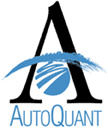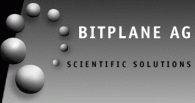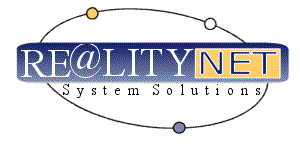
|

|

|

|
| -- New : transp. journée d'évaluation COST (17/12/04) -- | -- Présentation -- | -- L'agenda -- | -- L'agenda (accès restreint) -- | -- Homepage Nicolas Dey -- |
Cette page est là pour recenser les conférences et plus généralement les références qui traitent de sujets pouvant intéresser notre projet (comme la microscopie confocale, la déconvolution, etc.).
| Web : | http://www.biomedicalimaging.org/pages/621231/index.htm" |
| Date : | 15 novembre 2003 / November 15th, 2003 |
| Lieu : | Arlington, Virginia. |
| Registration : | Opened |
| Thèmes : | deconvolution bioimaging ... |
| Web : | http://www.mc2003.tu-dresden.de/ |
| Date : | 07-12 septembre 2003 |
| Lieu : | Dresden, Germany |
| Registration : | Closed |
| Thèmes : | 3D image processing ... |
| Web : | http://www.focusonmicroscopy.org/ |
| Date : | 13-16 avril 2003 |
| Lieu : | University of Genova, Italy |
| Registration : | Closed |
| Thèmes : | 3D image acquisition 3D image processing confocal microscopy ... |
| Web : | http://www.gensips.gatech.edu/ |
| Date : | 11-13 octobre 2002 |
| Lieu : | Raleigh, North Carolina, USA |
| Registration : | Closed |
| Thèmes : | image processing ... |
| Web : | http://wes.feec.vutbr.cz/UBMI/bs2002.html |
| Date : | 07-10 juillet 2002 |
| Lieu : | Washington, D.C. USA |
| Registration : | Closed |
| Thèmes : | Optical microscopy (confocal, multi-photon, fluorescence) 2D and 3D reconstruction Medical imaging ... |
| Web : | http://www.biomedicalimaging.org/ |
| Date : | 26-28 juin 2002 |
| Lieu : | Brno, République Tchèque |
| Registration : | Closed |
| Thèmes : | Medical imaging Image analysis |
Journal of Microscopy http://www.blackwellpublishing.com/journals/jmi/
Royal Microscopy Society http://www.rms.org.uk/
Links http://ourworld.compuserve.com/homepages/pvosta/pcrimg.htm
Cours sur le confocal http://www.novaknowledge.nl/biomedisch_clm.htm
Voici les liens sur les sites Web des principaux constructeurs de microscopes confocaux. Pour avoir plus de détails concernant les caractéristiques des microscopes, le logo (à gauche) est un lien sur le site du constructeur. Voici donc ces constructeurs par ordre alphabétique :
Chaque constructeur propose plus ou moins son soft de déconvolution d'images optiques fluorescentes, ou d'images confocales. Nous allons donc en retrouver quelques uns. Mais il y a aussi plusieurs entreprises ou universités qui développent ce genre de produit. En effet, lorsque l'on utilise un microscope confocal avec un large champ (wide-field), il est quasiment toujours nécessaire de déconvoluer l'image obtenue. Nous allons donc présenter quelques logiciels de déconvolution (liste non exhaustive) :

|
AmiraDeconv
|

|
AutoDeblur AutoDeblur is a novel deconvolution
software application for producing extremely high resolution results
through image restoration by removing out-of-focus haze, blur, noise
and other problems from both 3D and 2D micrographs. It uses a variety
of important and useful deconvolution algorithms, including
AutoQuant's proprietary Blind Deconvolution. The Blind Deconvolution
algorithm is both iterative and constrained, yet unlike other
deconvolution products, it does not require the manual calibration and
measurement of the point spread function (PSF). Instead, it constructs
the PSF directly from the collected data set. From http://www.aqi.com/ |

|
Bitplane (
http://www.bitplane.com/index_flash.shtml/) distributes Huygens,
from SVI. -- N. Dey Huygens makes intelligent use of a microscope's inherent imaging characteristics, which produces higher image resolution and lower noise levels than other deconvolution systems. Depending on the type of image you have and the quality you need, the Huygens system offers three deconvolution options:
|

|
DSP Software: these softwares are toolboxes for
Matlab(R). They are available for download at
Rice University on
http://www-dsp.rice.edu/software/
. There are:
|

|
SharpStack: The Deconvolution Module for Image-Pro Plus
& Image-Pro Discovery
http://www.mediacy.com/sharpstack.htm The No Neighbor method uses the information from each single slice to construct a 2D PSF. This is the fastest but may not be as representative of the sample as the other methods. Inverse filter, nearest neighbor, and no neighbor algorithm functions are all included in SharpStack. See also: AutoDeblur Gold, wide field only, confocal only or wide field and confocal. |

|
RealityNET System Solutions propose to power up one's microscope by improving the quality of the images. By sending them raw images and some parameters about the microscope, they will deconvolve them and send it back. For the moment (2004.06), the provided service is FREE, because it is still a testing version of the tools. (Thanks to A. Diaspro for providing us this link!) (For more informations, see http://www.powermicroscope.com ) |

|
MetaMorph The MetaMorph Imaging System can improve experiment performance and image appearance by mathematically removing the out-of-focus effects common to optical light microscopes. In most microscopes, the lens aperture causes light from a point source to spread out or diffract, and light from out-of-focus planes can result in image contamination. This is caused by the optical system's Point Spread Function (PSF) and is most often seen with thick sample preparations. Two deconvolution commands in MetaMorph can be employed to offset these undesirable out-of-focus effects. The first command, called Nearest Neighbors, uses an estimation of the three-dimensional PSF to compute the contributions from adjacent out-of-focus planes, and then removes this data from the original information to create a sharper resulting image. (For more informations, see http://www.image1.com/products/metamorph/deconvolution-3d.cfm ) |

|
XCOSM is an X-Windows interface to Computational Optical Sectioning Microscopy (COSM) algorithms [1-7] for removing out-of-focus
light in 3-D volumes collected plane by plane using either widefield or confocal fluorescence microscopy. The interface allows users to
view and process multiple 3-D datasets within a simple mouse-driven environment. The software was written for a unix based system. It
is possible to compile XCOSM on a PC with linux. Information on COSM can be found in the Tutorial - Image Restoration for 3-D
Microscopy and in lectures given by J.-A. Conchello. XCOSM can be dowloaded for free. From http://rayleigh.wustl.edu/~xcosm/ |

|
VayTek Image VayTek Image is an image processing and data acquisition software. It allows scientists to capture images in real time from their microscope and process the images to bring out the relevant features. This free download of VayTek Image provides software that can only use existing images to perform its functions. VayTek Image is designed to capture images from various digital cameras. |

| Web : | http://www.microscopyu.com/articles/confocal/index.html |
Pour me tenir informé des informations et des modifications que vous désirez voir apparaître sur cette page, envoyez-moi un e-mail : MailTo: Nicolas Dey.
| -- New : transp. journée d'évaluation COST (17/12/04) -- | -- Présentation -- | -- L'agenda -- | -- L'agenda (accès restreint) -- | -- Homepage Nicolas Dey -- |